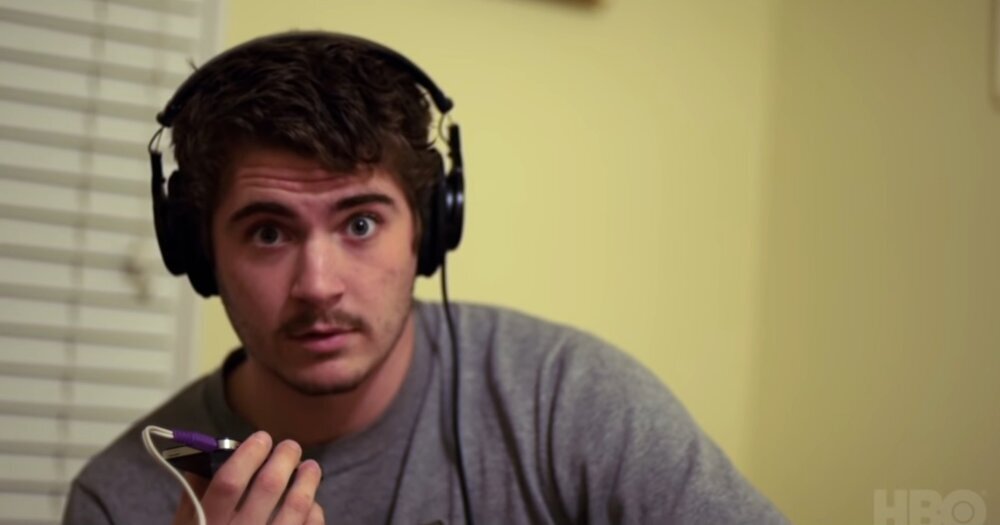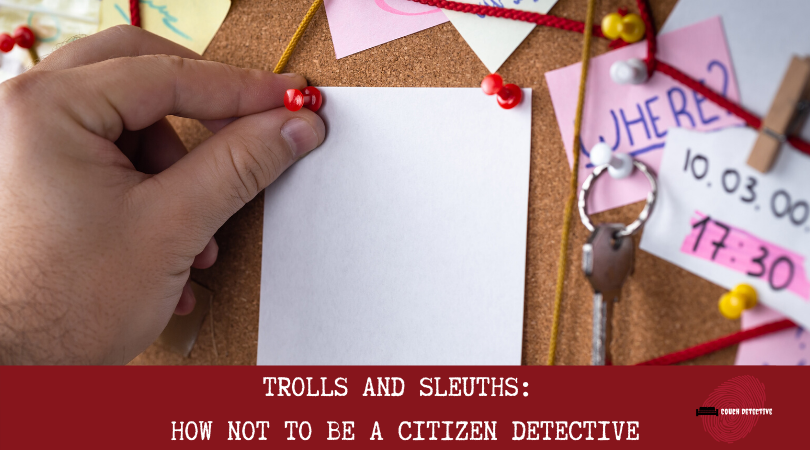While 2020 turned life upside-down for most of us, it did bring more time at home to binge-watch True Crime, and thankfully, there was no shortage of new content to watch. Some of these releases better than others, which is why I have compiled this list of my grades for some of the True Crime documentaries that came out this year.
A Wilderness Of Error (Hulu) - C
When Army surgeon Jeffrey MacDonald’s pregnant wife and two children were found murdered in their Fort Bragg home in 1970, the injured MacDonald claimed that they were attacked by hippies in a scene reminiscent of the Manson family. It didn’t t take long for eyes to shift toward MacDonald himself. This 5-episode series based on the book of the same name by Errol Morris, examines the possibility that this 50-year old crime is still a mystery.
Errol Morris, the filmmaker behind “The Thin Blue Line” (one of the most classic True Crime Documentaries of all-time) seeks to prove that Jeffrey Macdonald is innocent using alternate theories of the crime that seem stolen right out of the pages of Helter Skelter. Marc Smerling, the producer of The Jinx (another fantastic True Crime doc) presents us with little to no compelling evidence that the right man isn’t in prison.
With two powerhouse names behind this series, I was excited to dive in. I knew none of the facts of this case and was fascinated with the first episode. However, as the episodes dragged on, the same information felt stuck on repeat, and I was left to wonder why they were investigating the case at all. Skip it and watch “The Thin Blue Line” or “The Jinx” instead.
American Murder: The Family Next Door (Netflix) B+
While most True Crime followers know the story of Chris Watts and the murder of his wife Shanann and two daughters in 2018, it’s absolutely heartbreaking to watch the story unfold on screen. In a very 2020 style documentary, director Jenny Popplewell uses bodycam footage, interrogation room video, and Shanann’s own social media and texts to walk us through the days leading up to the disappearances and beyond. This full-length documentary film cleverly uses what evidence already existed against Chris, and leaves you to feeling like you’re sitting in a court room during a trial. The results are terrifying.
What it lacks in discussion of the motive or investigation into Chris Watt’s then-girlfriend, it almost makes up for in how it submerges you into the facts of the case. There’s never any doubt how the story is going to end and who is responsible, but in the end, there are no answers as to why someone would one day annihilate their entire family. Worth a watch if you want to sleep next to your spouse with one eye open from now on.
Class Action Park (HBO) A-
This full-length documentary brings something a little lighter to the list with a look back in time at the extremely dangerous waterpark that was popular in New Jersey in the 1980s. While the park did hurt people, and even caused several deaths, the film provides a mix of humor and nostalgia from former workers and people that grew up attending the park.
The interviews and old commercials bring the viewer back to an 80s childhood where fun was lot more unsupervised than it is for kids growing up today.. Seeing descriptions of these rides and how parenting during that time was much more relaxed; it’s a wonder that anyone survived.
The film takes a dark turn in the second half with the 1980 death of George Larsson, Jr. when he flew off the Alpine Slide and hit his head on rocks. Several more deaths followed Larsson’s including a drowning at the wave pool and an electrocution on a kayak ride. Suddenly the saying rings true, “It’s all fun and games until someone gets hurt.” Still a must-see for the variety that it adds to the True Crime genre.
How To Fix A Drug Scandal (Netflix) A
This four-part Netflix series provides a break from murder and delves into the misdeeds of two Massachusetts chemists that end up affecting the outcome of nearly 47,000 drug convictions across the state. It was astonishing to see how the actions of two people could have the consequences to change the lives of so many people and their futures. It highlights another area in which our justice system is vulnerable to failing or causing innocent people to go to jail.
We have seen so many documentaries about how people are often railroaded by police officers or prosecutors, but this look at the workings of the lab technicians was was extremely eye-opening. For anyone that is passionate about criminal justice reform, this series is a must-see.
I’ll Be Gone In The Dark (HBO) A+
This six-part documentary series may have been the best of the year. Michelle McNamara’s book by the same name is one of my favorite True Crime books, so it was so special to see many of the faces that McNamara describes on the screen. The series follows McNamera’s search for The Golden State killer and the process of writing her book.
While the series focuses more on Michelle and her process than it does The Golden State Killer and his crimes, I found the shift of focus the perfect companion to her book. Both the book and the series feel like they are their own work, so much so that the series led me to reread the book so I could experience it again. It also doesn’t feel like you have to have read the book first to have enjoy this series. The last episode has such a fantastic pay-off that I dare you not to cry. To read more of my thoughts on the series, check out the post I did about it. If you haven’t watched the series yet, it’check out the post I did about its an absolute can’t-miss.
Murder On Middle Beach (HBO) A+
This four-part series was a very close second for best of the year for me. In it, director Madison Hamburg tries to find answers about who killed his mother in 2010. In deeply personal interviews with his family members, Hamburg pulls no punches when it comes to asking the tough questions. As much a who-dun-it as it is a portrait of the person his mother was, this series is incredibly heartfelt and inspiring.
Hamburg’s open-minded approach leaves viewers to draw their own conclusions about what may have happened to Barbara Hamburg. While it’s frustrating for those who don’t like unsolved mysteries, it feels so authentic to experience that mystery with Hamburg and realize that life doesn’t always give us the answers that we want, but often the journey in itself is healing. I can’t recommend watching it enough.
Murder to Mercy: The Cyntoia Brown Story (Netflix) A-
This full-length documentary covers the story of Cyntoia Brown from her imprisonment for murder to her eventual release. In 2004, while Brown was being sex trafficked, she claims she shot Johnny Allen in self defense when he pulled out what she thought was a gun. Despite being only 16 at the time of the crime, Brown was tried as an adult and sentenced to life in prison.
After 15 years in prison, Brown was granted clemency by Tennessee Governor Bill Haslam when the case gained national attention from celebrities and advocates. The documentaries explores the idea of children being charged as adults, as well as Brown’s culpability in the crime as a child being forced into sex work. My only wish was that the story had been explored in a longer format and that there had been participation from Brown herself. However, it was still a great watch!
Outcry (Showtime) A+
Once I started watching this five-part series on Showtime, I absolutely couldn’t stop. In 2013, high school senior and football star Greg Kelley was accused of sexually assaulting a four-year old. At first, it feels like justice has been served in this horrible crime, but the series continues in twists and turns that you won’t see coming.
I don’t want to say much more than that, because the series is so surprising (if you haven’t heard of this case before) that it’s best to go in to it with as little information as possible. Trust me when I say you want to watch it to the very end.
Ted Bundy: Falling for a Killer (Amazon Prime) A
The Ted Bundy story is one that has been overdone so many times that I almost didn’t watch this 5-episode series. However, the new perspective that it brings is refreshing. Told from the point of view of Bundy’s long-term girlfriend Elizabeth Kendall and her daughter Molly, the series focuses more on the victims than any other series I’ve seen about a serial killer.
While the series doesn’t provide any information that a True Crime buff wouldn’t already know, it’s so nice to see a series that is less about the glorification of the killer and more about the lives that were lost. Adding Kendall’s point of view and how, while she was spared from his violence, she was also a Bundy victim. It’s a commentary on collateral damage and how the killer’s family and loved ones often suffer in addition to their vicitms. If you can stomach one more Bundy documentary, it should be this one.
The Trials of Gabriel Fernandez (Netflix) A
Years of True Crime obsession have left me by no means squimish, but this 6-part documentary series was extremely hard to watch. Gabriel Fernandez was brutally murdered by his mother and her then boyfriend after months of horrific abuse and torture. While his teacher repeatedly tried to get him help, social workers and law enforcement ultimately did nothing to stop to stop Gabriel’s death.
The series chronicles Gabriel’s abuse, how the system failed him, and how California’s Department of Children and Family Services (DCFS) has had other majors issues since this case. While it’s not the most fun documentary to watch, the subject matter is so important to be aware of.
Tiger King (Netflix) A-
No list of 2020 documentaries would be complete without a mention of Tiger King. The 8-part series chronicles the feud between zoo keeper Joe Exotic and Big Cat Rescuer Carole Baskins and the band of characters that surround them. It was the perfect distraction that we needed at the beginning of lockdown that included hokey music videos and murder accusations, and inspired memes galore. While the substance isn’t nearly as serious as most True Crime documentaries, the experience is good fun. If for some reason you haven’t seen it yet (where have you been?!) you’ll distract yourself from life for a good day or two if you watch it. #CaroleDidIt
What true crime documentaries did you love this year? Did I leave any off the list?
























































